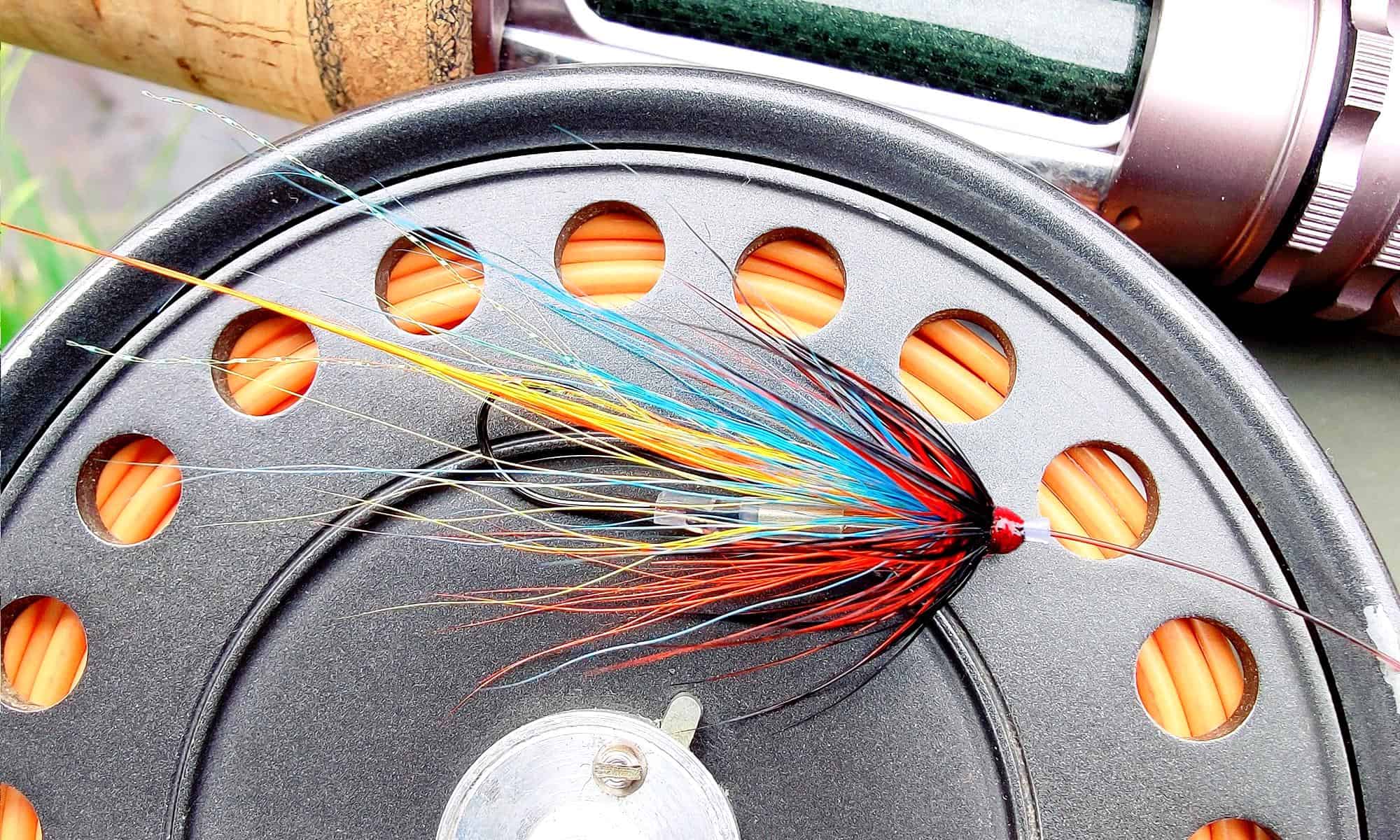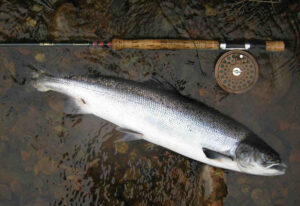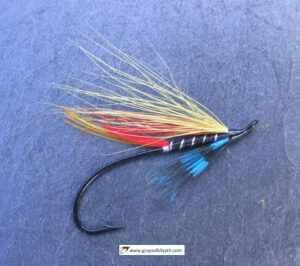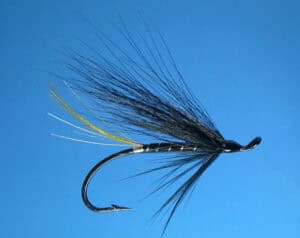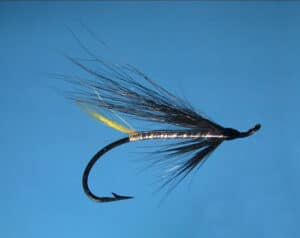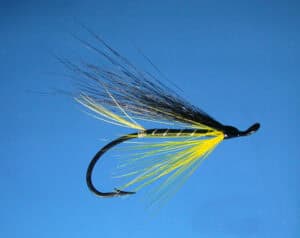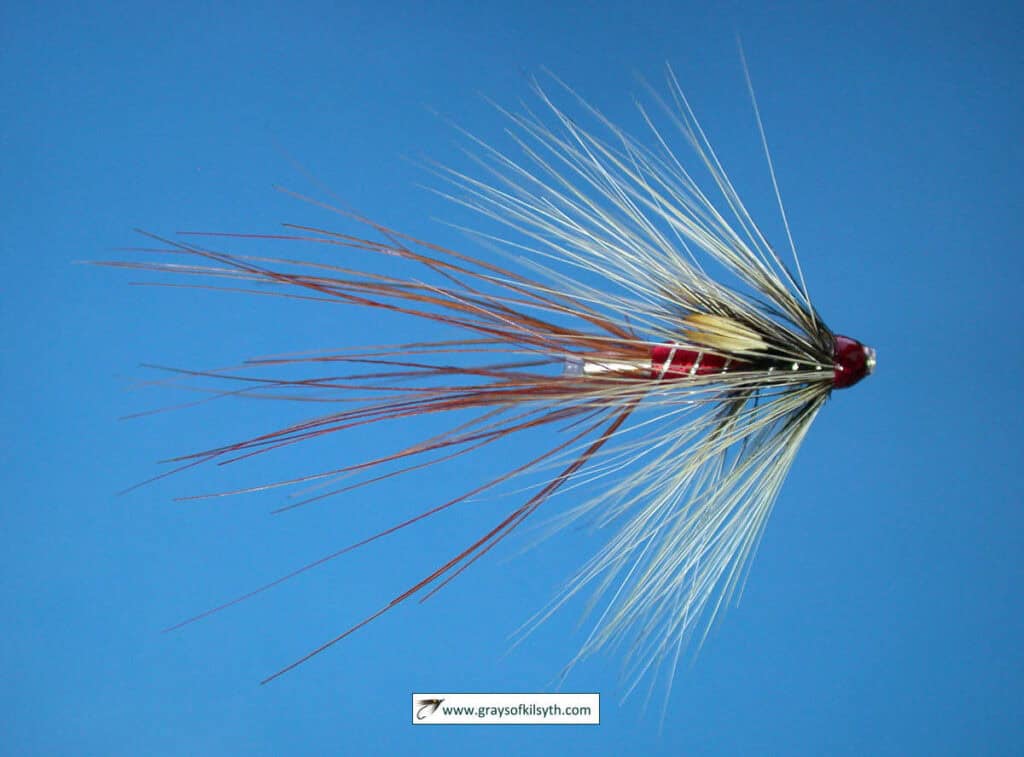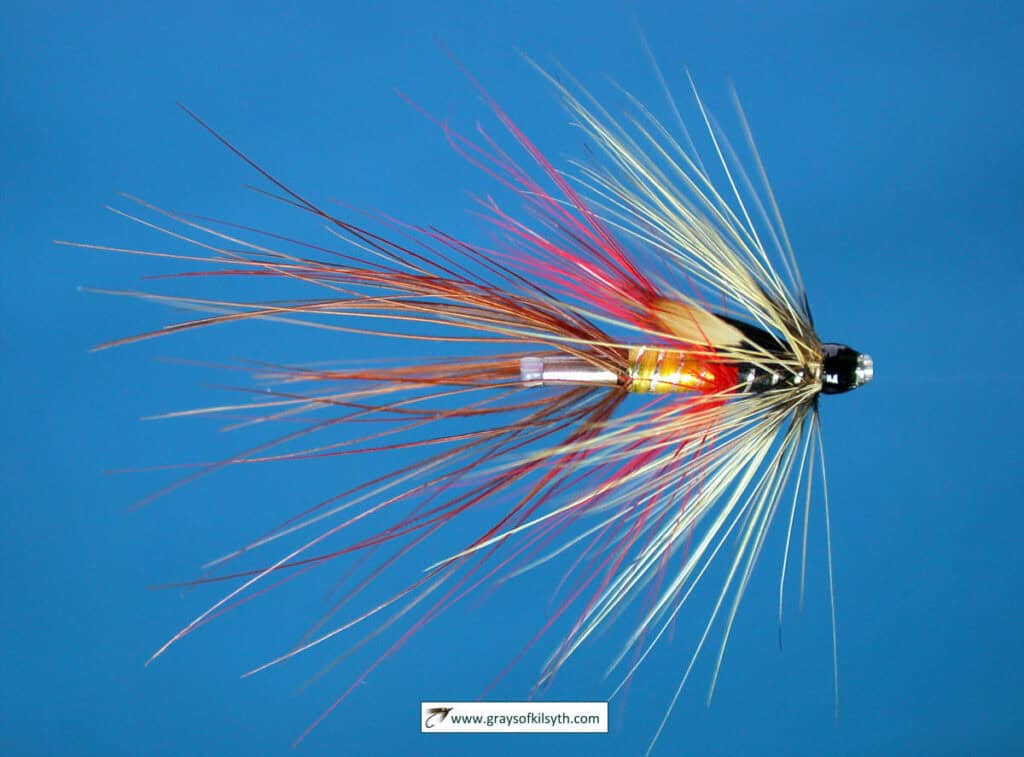Salmon Fly History and Development | Modern Trends in the Tying of Salmon Flies and Salmon Fly Fishing
This website will focus on salmon flies, old and new; on salmon fly fishing and fly tying; something of salmon fly history and tradition, as seen in the classic Scottish traditional fly patterns devised for fly fishing on the salmon rivers of Scotland; together with more recent developments in fly dressing, especially modern trends in the manufacture, design and tying of tube flies, with a particular focus on salmon flies dressed on fine stainless steel Needle Tubes.
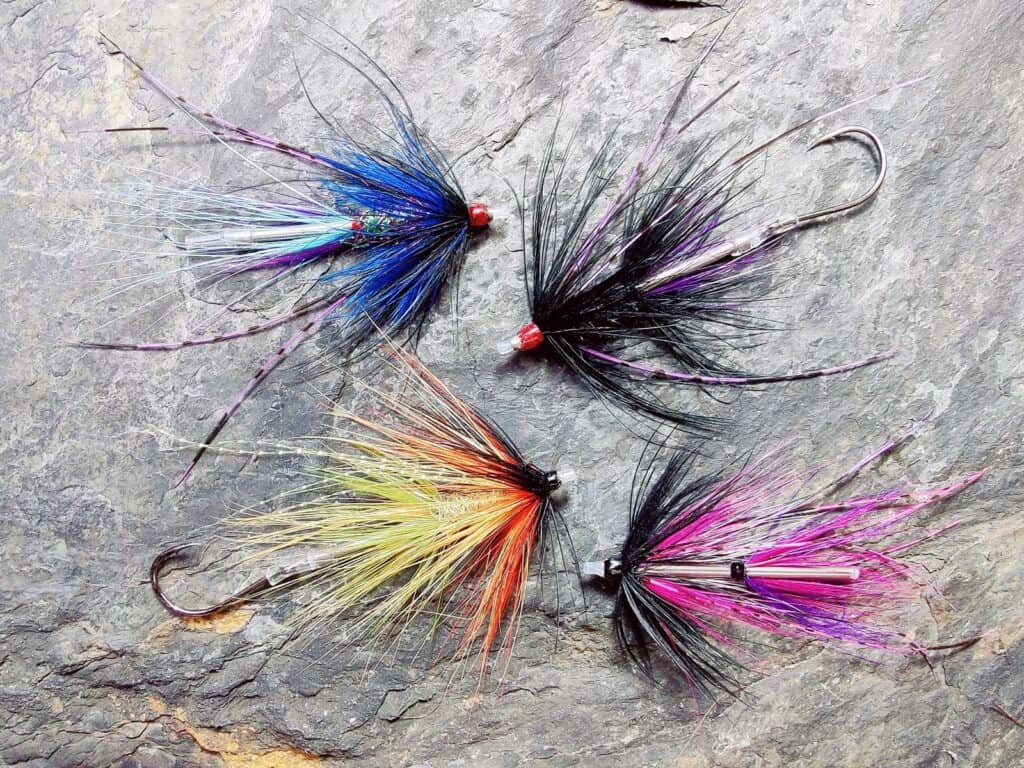
History and Development of the Salmon Fly
The Atlantic Salmon, Salmo salar, the “King of Fish”, has inspired a rich history of salmon flies, a wealth of exquisite fly patterns, created over two centuries by talented fly tiers and those salmon fly fishermen fortunate enough to have plied their craft on famous salmon rivers throughout Europe and North America.
A fresh grilse taken on a Needle Tube Fly
Salmon Flies – The Early Days
The early days of Scottish salmon fly fishing were characterised by the fairly simple patterns of William Scrope, as illustrated in his “Days and Nights of Salmon Fishing in the River Tweed”, 1843. Scrope’s patterns included Meg in her Braws, Meg wi’ the Muckle Mouth, Kinmont Willie, The Lady of Mertoun, Toppy and Michael Scott. As an example, the dressing of Kinmont Willie is given as:
| Wings: Mottled feather from under the wing of a male teal Head: Yellow wool Body: Fur of the hare’s ear End of body: Red wool Tail: Yellow wool Round the body: Black-cock’s hackle |
These early salmon flies were rather drab in comparison to the later Victorian patterns promoted by George M. Kelson (The Salmon Fly, 1895). Here is his listed dressing for the Jock Scott, probably the most renowned of all classic salmon fly patterns:
| Tag: Silver twist and yellow silk. |
| Tail: A topping and Indian Crow. |
| Butt: Black herl. |
| Body: In two equal sections : No. 1, of yellow silk (butter-cup colour) ribbed with narrow silver tinsel, and butted with Toucan above and below, and black herl : No. 2, black silk, ribbed with broad silver tinsel. |
| Hackle: A natural black hackle, from centre. |
| Throat: Gallina. |
| Wings: Two strips of black Turkey with white tips, Golden Pheasant tail, Bustard, grey Mallard, Peacock (sword feather) Swan dyed blue and yellow, red Macaw, Mallard, and a topping. |
| Sides: Jungle. |
| Cheeks: Chatterer. |
| Horns: Blue Macaw. |
| Head: Black herl. |
The Victorian era, then, i.e. the latter half of the nineteenth century into the early twentieth century, saw the introduction of a multitude of beautiful, if much more intricate and somewhat gaudy patterns, renowned salmon flies such as Jock Scott, Durham Ranger, Silver Doctor, Childers, Gordon, Green Highlander, Lemon Grey, Dusty Miller and many, many more, now highly prized more as collectors’ items rather than practical fishing flies. Many of today’s fly tiers continue to practise the traditional skills of their Victorian antecedents, specialising in the meticulous dressing of the old salmon fly patterns, the best of which are still in great demand as true works of art.
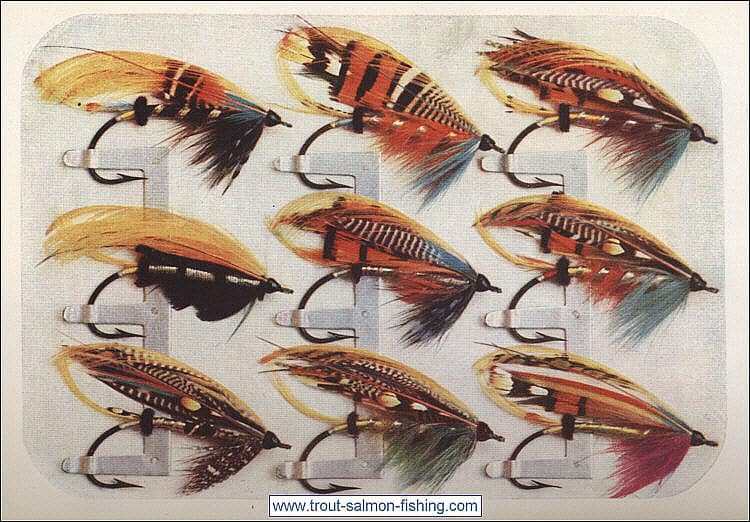
The early twentieth century saw the classic salmon fly patterns gradually superseded by simpler fly patterns, many incorporating hair wings in place of the married feather wings and exotic feathers of the earlier patterns. Prime examples of this new genre are the Hairy Mary, a creation of Johnny Reidpath of Inverness, and the Garry Dog, or Minister’s Dog, tied by John Wright in a Tweedside tackle shop using the hair from the local Minister’s dog, a yellow retriever by the name of Garry. Around the same time, traditional salmon fly patterns, like those popular on the Dee, were being simplified and modified, exemplified by the “greased line” patterns popularised by Arthur. E. Wood of Cairnton, such as the Jeannie, Blue Charm, Silver Blue and Logie.
Above is an example of that much used salmon fly, the Garry (also known as a Garry Dog or Minister’s Dog) dressed in the low water Dee style popularised by Arthur E. Wood, who was from 1913 to 1934 the tenant of the Cairnton beat on the Aberdeenshire Dee, during which time he is reported to have killed 3,490 salmon, most of them on sparsely dressed flies such as the Blue Charm, Logie and Jeannie, fished off a greased silk line.
This trend continued through the twentieth century to produce such timeless salmon fly patterns as the Stoat’s Tail ( along with variants Silver Stoat and Tosh) and Munro’s Killer, simple but extremely effective flies which have stood the test of time.
Mention should also be made here of the unique style of salmon fly tying represented by the Irish Shrimps, the most famous of which include Curry’s Red, Bann Special, Foxford, Faughan and Wilkinson Shrimps. Irish Shrimp salmon flies are as popular as ever today both in and beyond Ireland and tyers continue to modify old patterns and create new flies in this most attractive, and effective, style.
Salmon Flies – The Modern Era
The latter half of the twentieth Century saw some important innovations in salmon fly design and style. The traditional patterns and those of the earlier half century continued to be simplified and modified, more often than not utilising hair for the wing in conjunction with new artificial fly tying materials such as Krystal Flash and Lite Brite, although some feather wings, notably teal and bronze mallard, remained popular as a winging material, for both salmon and sea trout flies.
The nineteen eighties saw a most significant event in salmon fly fishing, the introduction of Ally Gowans’s creation, the Ally’s Shrimp. This fly, with its extra long tail of orange bucktail, caught the imagination of salmon fishermen the world over and, in a very short time, became one of the most popular salmon flies of all time, the “salmon fly of the century”. Ally Gowans followed up with his Cascade fly which has now become, if anything, even more popular than its predecessor. It would be a rare salmon fly box which does not include one or two Cascades, or one of its many variants.
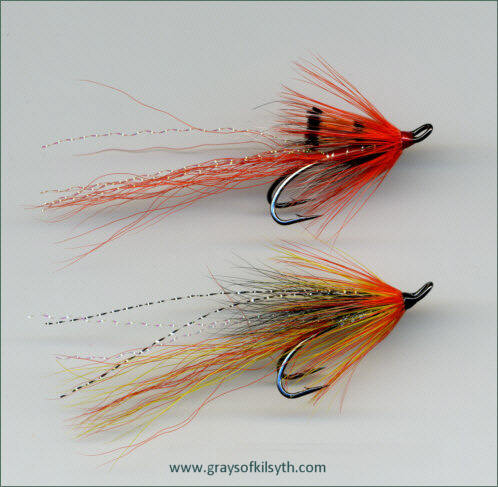
Salmon flies of this period, certainly for use during the height of the salmon fishing season, were generally dressed on single or double hooks, ranging in size from about 14 to 4. Treble hooks, e.g. Esmond Drury trebles in sizes from 14 to 8, were also popular, especially for Irish Shrimp patterns. When longer or heavier flies were required, particularly early and late in the season, the larger sizes of single and double hook were increasingly replaced with either Waddington shanks (developed by Richard Waddington in the 1940s – see Salmon Fishing, Richard Waddington, 1947) or long tubes, usually in copper, brass or aluminium, up to three inches in length – not the easiest things to cast on a fly rod.
Recent developments in fly lines have made things a bit easier for those fishing our salmon rivers in the colder months. Advanced fly line taper design, combined with the availability of fly lines in a wide range of densities, from floating, through neutral, intermediate, slow sink, medium sink, fast sink to extra fast sink, have allowed the salmon fly fisher to fish relatively light salmon flies at almost any depth. So the earlier three inch copper tubes have generally been dispensed with in favour of smaller, lighter bodied flies. A fly for fishing in early spring might now consist of a short plastic tube, perhaps with a brass or tungsten conehead added at the front end, dressed with a long mobile wing of several inches in length. Fished off a high density, quick sinking weight forward (Spey or Skagit) fly line, or a lower density fly line in conjunction with a fast sinking tip or leader, this will often achieve the same depth as the three inch copper tube fished in earlier times off a Wet Cel 2 double tapered line and, crucially, will be much easier to cast. Another option is to utilise a very short but extremely heavy tube, e.g. in tungsten, to get the fly down quickly to a fishable depth but on a lower density fly line.
In short, the modern salmon fly fisherman can select from a wide range of rods, lines and fly styles, which were not available to earlier generations. He can employ long or short rods, combined with Weight Forward Spey lines with various head lengths, Shooting Heads, Multi-tips, or Skagit lines. He may select flies dressed on single, double or treble hooks, or flies dressed on needles or metal Waddington shanks, or on tubes of varying shapes, sizes and diameters in plastic, aluminium, stainless steel, copper, brass or tungsten, with additional weight in the form of coneheads in brass or tungsten, or attachments such as turbo-discs to give more movement in the fly. These tube flies may be armed with single, double or treble hooks, barbed or barbless.
Salmon Tube Flies
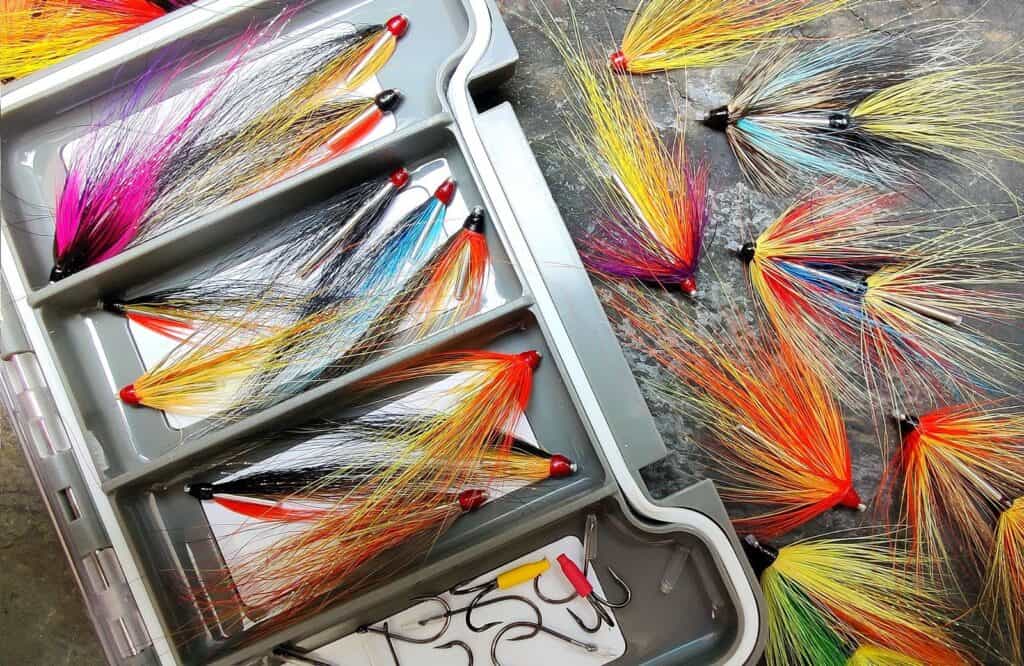
Tube flies have long been popular in salmon fly fishing. For much of the early and middle part of the last century, tube flies were fairly simple affairs, comprising hair wings, often of bucktail, applied to copper, brass, aluminium or plastic tubes, usually dressed with a floss body ribbed with gold or silver wire or tinsel, such as the Slipstream type of tube supplied by companies like Veniard. Although these tubes are still popular today, they have been supplemented over recent years by an ever growing variety of tube styles in a variety of densities and materials, now including tungsten and stainless steel. The innovative fly tyer can now make his own salmon tube flies in any shape, size or weight that he desires and fish them most effectively on a variety of fly line weights, densities and profiles. The possibilities open to today’s fly tyer are endless. Shown below are two simple modern tube flies, for salmon or sea trout fishing, dressed sparsely on ultra-slim stainless steel Needle Tubes, outside diameter 1.5mm with a length of 15mm.
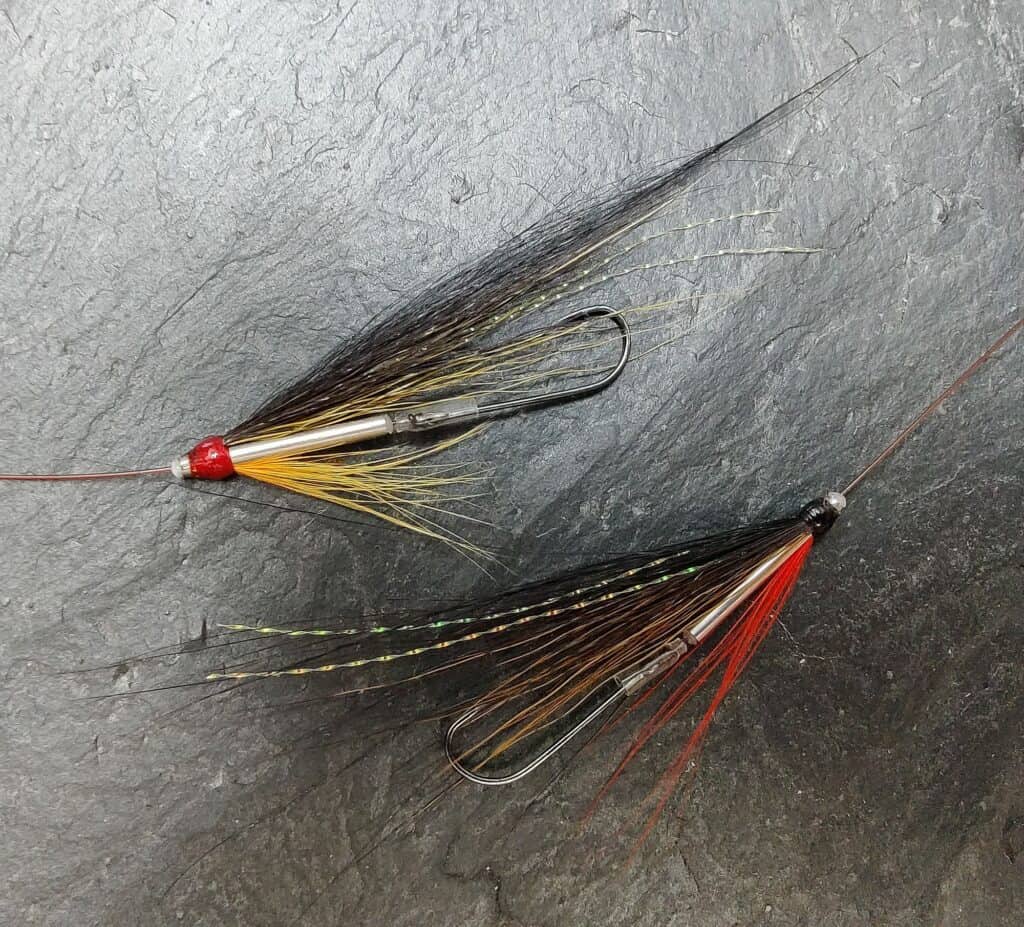
Although tube flies may be used in conjunction with treble, double or single hooks, increasing regulation and restrictions on fly fishing tackle and baits, along with an increasing focus on catch and release and conservation, has seen an increase in the use of single hooks in our salmon fishing. The tube flies above are armed with fine single hooks, allowed to swing freely at the rear of the tube fly, the hook eye and knot being protected by a Knot Guard made very simply from heat shrink tubing. See How to make a knot guard (or swing tube) for a Free Swinging Tube Fly Hook
Scottish Shrimp Tube Flies
Tube flies may be dressed in a variety of styles. Shown below is an example of a Scottish Shrimp dressed on a stainles steel needle tube.
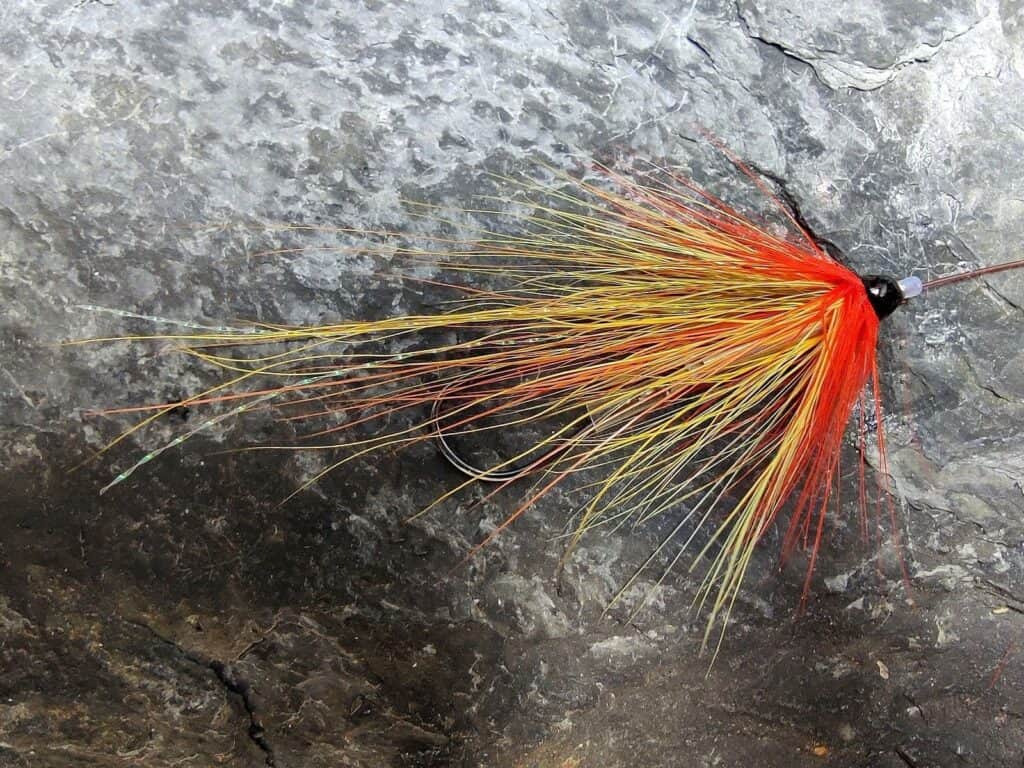
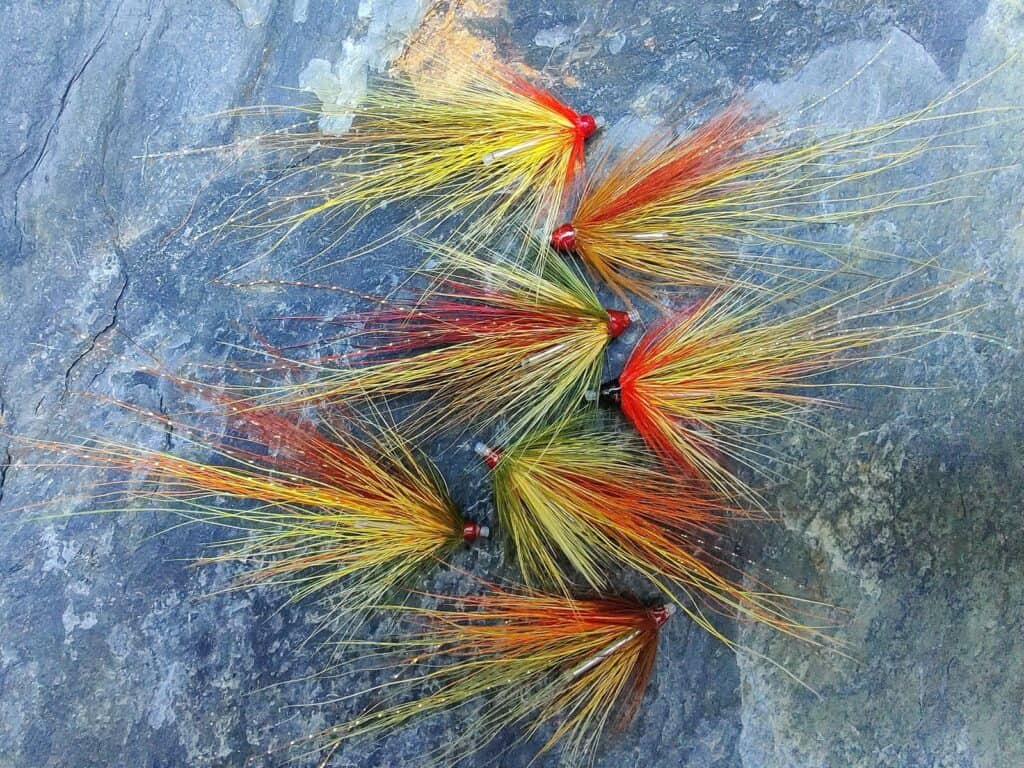
The Intruder Tube Fly
Slim stainless steel Needle Tubes lend themselves well to the tying of Intruder Flies, offering the benefits of a Waddington shank with the simplicity and ease of tying of a tube. The slim 1.5mm diameter stainless tube is as slim as a Waddington and of similar weight. Moreover, it does not really require a body dressing over the polished silver tube.
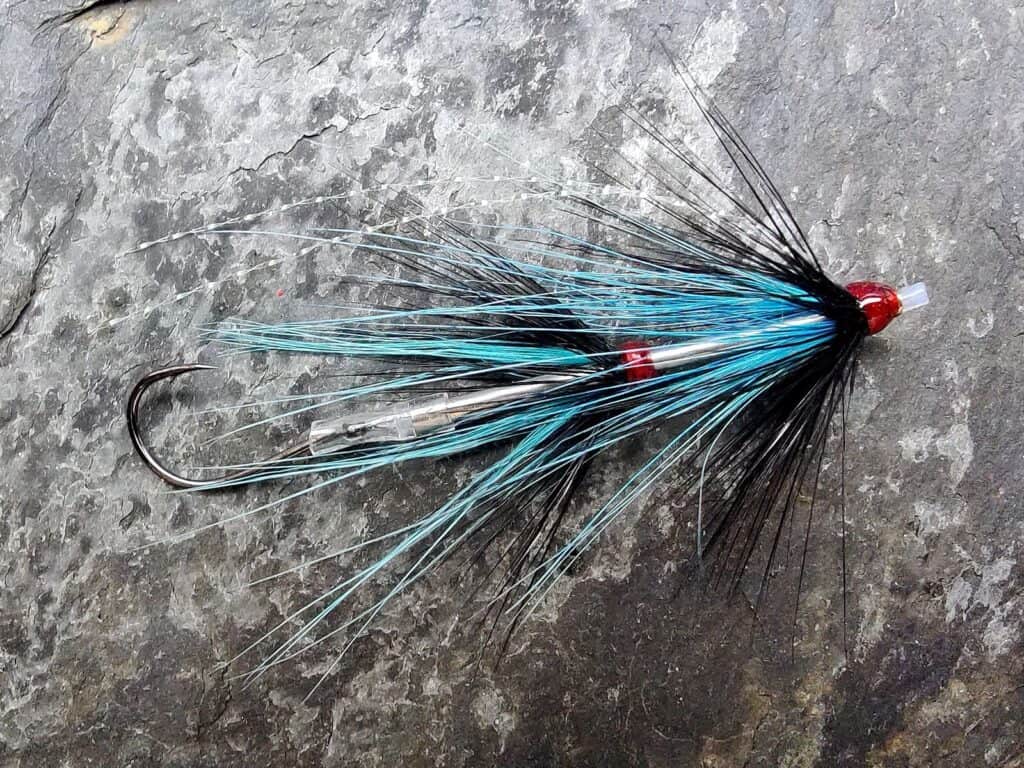
For maps and information about some of the best Scottish salmon fly fishing rivers see SALMON FISHING IN SCOTLAND
